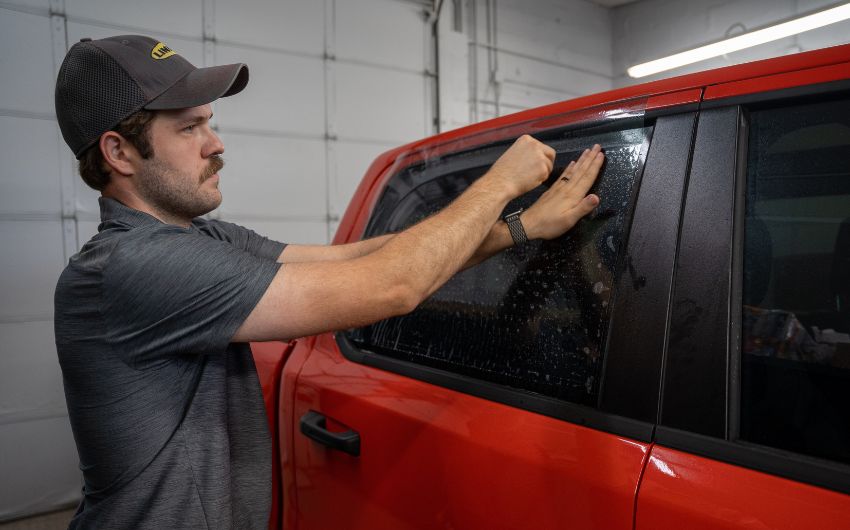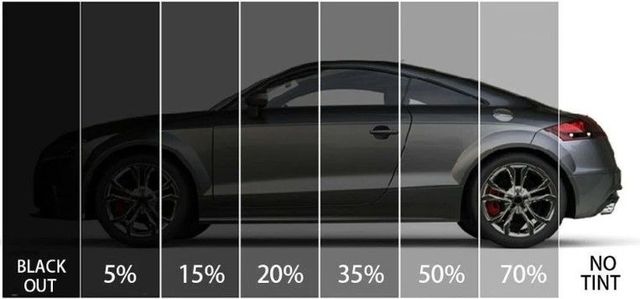Why Vehicle Window Tinting is a Must-Have for Modern Autos
Why Vehicle Window Tinting is a Must-Have for Modern Autos
Blog Article
Home Window Tinting Rules and Guidelines: What You Need to Know Before Tinting Your Vehicle
Before waging home window tinting for your car, it is vital to acquaint yourself with the varied legislations and guidelines that govern this technique throughout various states. These regulations dictate the permissible levels of tint darkness, typically determined by visible light transmission (VLT) portions, and include details specifications for front windscreens aimed at making certain road safety and security. In addition, specific territories might use medical exemptions for individuals with certifying problems. Comprehending these intricacies can conserve you from possible lawful ramifications, however what are the particular rules in your state?
Introduction of Window Tinting Laws
Window tinting regulations are frequently based on variation throughout different jurisdictions, showing local regulations and security factors to consider. These regulations determine the permissible levels of tint darkness and reflectiveness on lorry home windows, ensuring that drivers maintain adequate visibility while likewise securing against damaging UV rays and warmth.
The majority of guidelines identify window tinting based on the Visible Light Transmission (VLT) percentage, which indicates the quantity of light that can go through the window. Usually, reduced VLT percentages signify darker tints. Laws typically differentiate between the front, side, and rear home windows, with stricter limitations put on the front windscreen to boost safety for both the motorist and other road users.
Compliance with home window tinting policies is essential, as offenses can result in fines, obligatory elimination of the tint, and possible boosts in insurance costs. It is vital for lorry proprietors to familiarize themselves with local regulations before continuing with window tinting installments.
State-by-State Tint Regulations
Comprehending the certain window tinting laws in each state is important for lorry owners looking for to follow the regulation. Each state in the united state has actually established its very own set of guidelines governing window tinting, which can vary substantially. These regulations usually determine the permitted degrees of color darkness, the kinds of home windows that can be tinted, and any kind of clinical exceptions that may apply.
For example, states like The golden state have rigid constraints on color darkness for front windows, while others, such as New Mexico, may enable darker colors. Furthermore, particular states mandate particular exposure portions for various windows, including the windscreen, front side windows, and back home windows. It is vital for auto owners to familiarize themselves with their state's legislations to avoid potential fines or penalties.
Additionally, some states might require a qualification sticker label to be put on tinted home windows, indicating conformity with state legislations. Failing to abide by these regulations not only takes the chance of legal consequences but can likewise impact safety and visibility while driving. For that reason, automobile owners need to carry out detailed study or seek advice from neighborhood authorities to guarantee complete understanding and compliance with state-by-state tint laws.
Allowed Tint Types and degrees
Lots of automobile proprietors might be shocked to find out that permitted tint levels and kinds differ commonly across different states. Each state has developed its own policies concerning the acceptable darkness and reflectivity of home window color, commonly gauged by Visible Light Transmission (VLT) portions. VLT refers to the quantity of light that can pass via the colored windows; therefore, a lower percentage indicates a darker color.

Furthermore, the kinds of tint materials enabled can differ, with some states restricting mirror-like or metal coatings. It is necessary for lorry proprietors to acquaint themselves with their state's particular legislations to ensure my site compliance. Non-compliance can result in penalties, required removal of the tint, or other lawful effects, making it vital to understand these regulations prior to waging setup.
Medical Exemptions for Tinting
While not all states give allowances for clinical exemptions concerning home window tinting, those that do recognize the need for details people to enhance click here for more info presence and comfort due to clinical problems. Various clinical conditions, such as lupus, skin cancer cells, and certain eye problems, can make people specifically conscious sunshine. Consequently, these people might require darker colors to secure themselves from hazardous UV rays and glow.

It is very important to keep in mind that despite having a medical exception, there may still be limitations on the degree of color permitted. Conformity with state regulations ensures that individuals are both safeguarded and within legal limitations. Those considering medical exemptions ought to call their neighborhood Division of Motor Automobiles or equal authority to comprehend the demands and treatments necessary to apply for an exception efficiently.
Fines for Non-Compliance
Failing to abide with home window tinting laws can result in considerable fines, which differ by state. Police are encouraged to release citations for vehicles that do not stick to the defined tinting regulations. These penalties usually consist of penalties, which can range from moderate total up to a number of hundred dollars, depending upon the intensity of the infraction and the state concerned.
In some territories, duplicated offenses may cause intensifying fines or extra fines, such as required court looks. In addition, non-compliance may require the removal of illegal tinting, typically at the owner's expense. In severe cases, habitual culprits may encounter suspension of their lorry enrollment till compliance is attained.
In addition, insurance policy ramifications may arise from getting numerous citations for home window color violations. Insurance companies might watch such violations as a sign of riskier behavior, potentially resulting in raised costs or trouble in insurance coverage.
To stay clear of these charges, it click here to read is crucial for car proprietors to acquaint themselves with their local window tinting legislations and make certain that their vehicle complies (Window Tinting). This positive strategy not only prevents legal implications yet additionally advertises road safety and security
Verdict

The majority of policies identify window tinting based on the Visible Light Transmission (VLT) portion, which suggests the quantity of light that can pass via the home window. Compliance with window tinting regulations is critical, as violations can result in penalties, compulsory elimination of the tint, and prospective increases in insurance costs.Understanding the specific home window tinting guidelines in each state is essential for vehicle owners looking for to comply with the regulation. These regulations often determine the allowed levels of color darkness, the kinds of windows that can be tinted, and any clinical exemptions that might apply.
For instance, states like California have strict restrictions on tint darkness for front home windows, while others, such as New Mexico, might allow darker tints.
Report this page